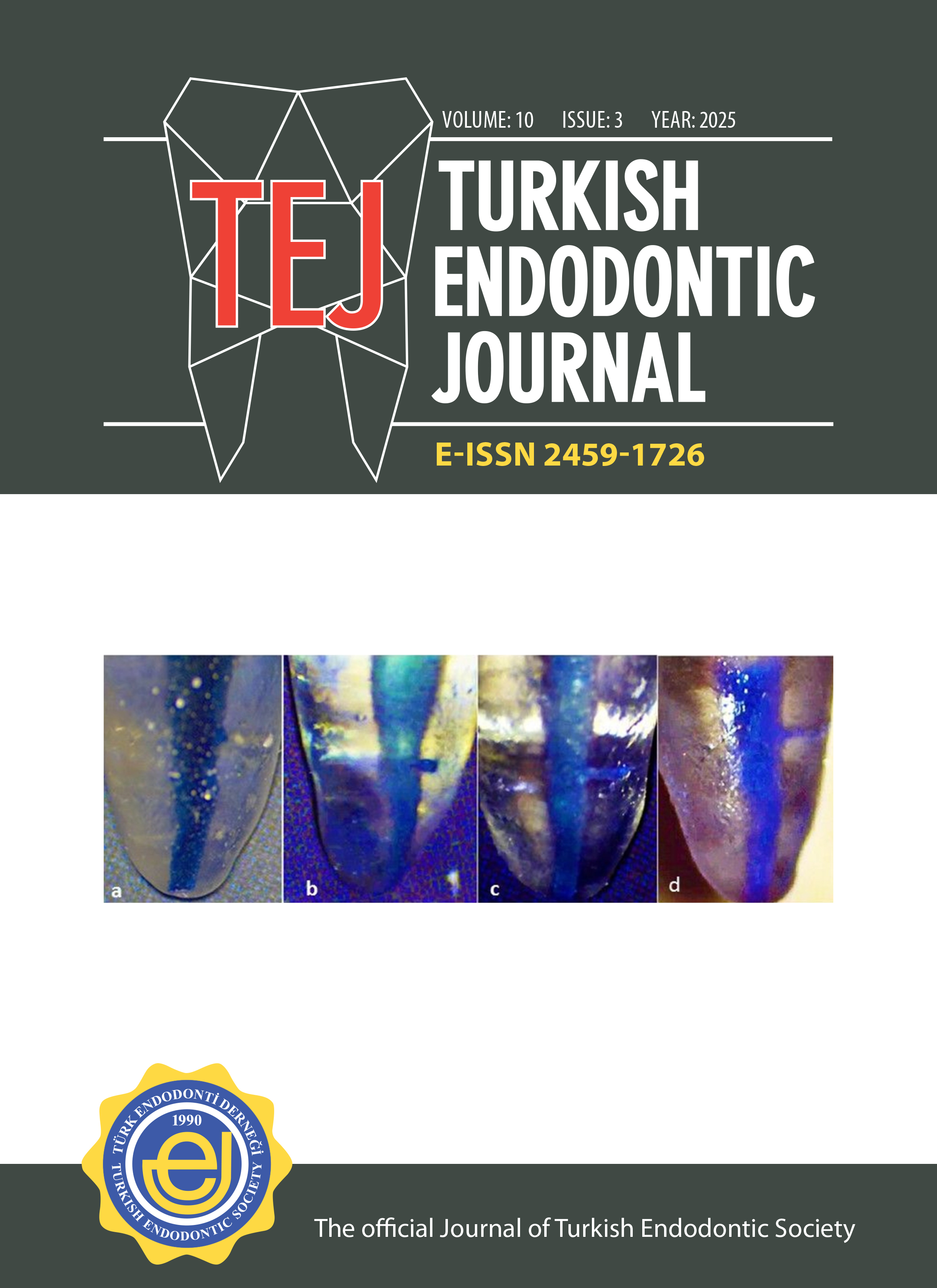Can activation of root canal sealer enhance the penetration into lateral canals?
Öznur Sarıyılmaz, Evren Sarıyılmaz, Saadet ElpeDepartment of Endodontics, Faculty of Dentistry, Çanakkale Onsekiz Mart University, Çanakkale, TürkiyePurpose: This study aimed to compare the efficacy of a resin-based canal sealer and a bioceramic canal sealer in obturating lateral canals, with and without the use of activation methods.
Methods: Lateral canals were created at apical positions of 3, 5, and 8 mm in eighty 3D-printed maxillary central teeth. After root canal preparation, the teeth were embedded in 1.5% agar agar to simulate periodontal tissues. The teeth were divided into two main groups based on the type of root canal sealer and further categorized into four subgroups for activation methods: Conventional, EDDY, EndoActivator, and Passive Ultrasonic. Root canals were filled using the single cone technique, and images were captured at 17× magnification. Sealer penetration into lateral canals was measured using ImageJ software. Activation methods were compared using the Kruskal-Wallis test; root levels were compared using the Friedman test, and comparisons between sealers were made with the Mann-Whitney U test at a 95% confidence level.
Results: Activation methods had no significant impact on sealer penetration for both types of sealers. In ultrasonic activation groups, the bioceramic sealer exhibited significantly higher penetration than the resin-based sealer at all root levels. In sonic activation groups, the bioceramic sealer showed significantly superior penetration, especially at the middle root level.
Conclusion: Activation methods did not significantly alter sealer penetration into lateral canals. Bioceramic-based root canal sealer demonstrated enhanced penetration compared to resin-based sealer, especially with ultrasonic and sonic activation.
Keywords: Bioceramic root canal sealer, EDDY, EndoActivator, passive ultrasonic activation.
Manuscript Language: English



















